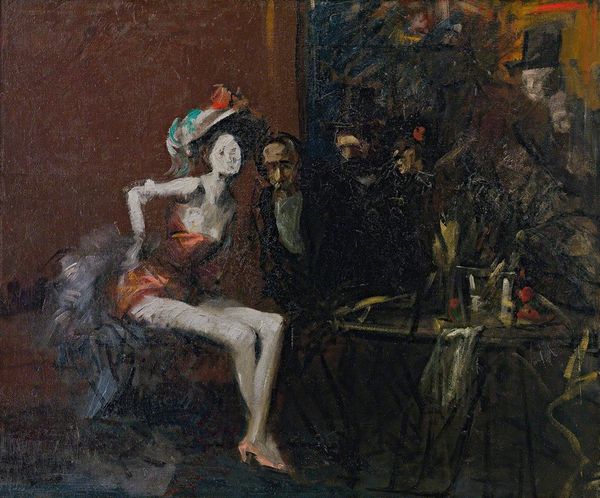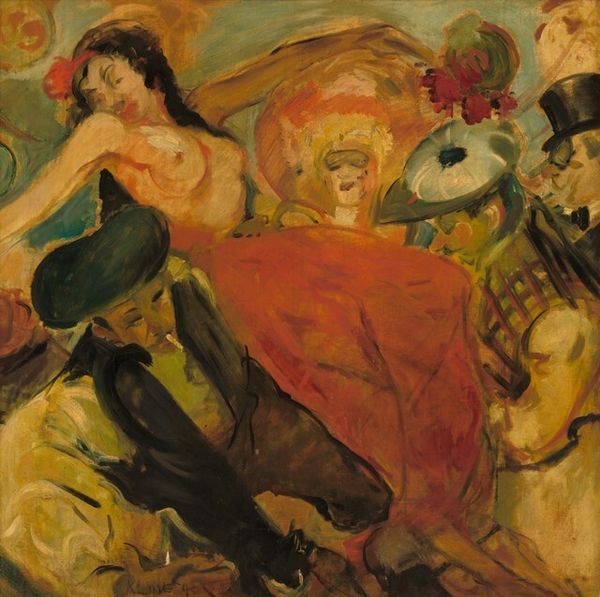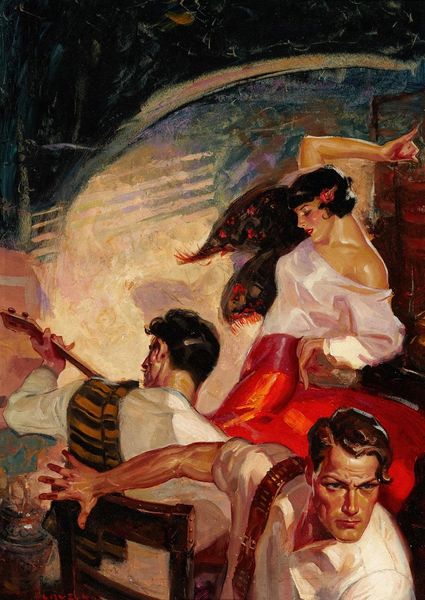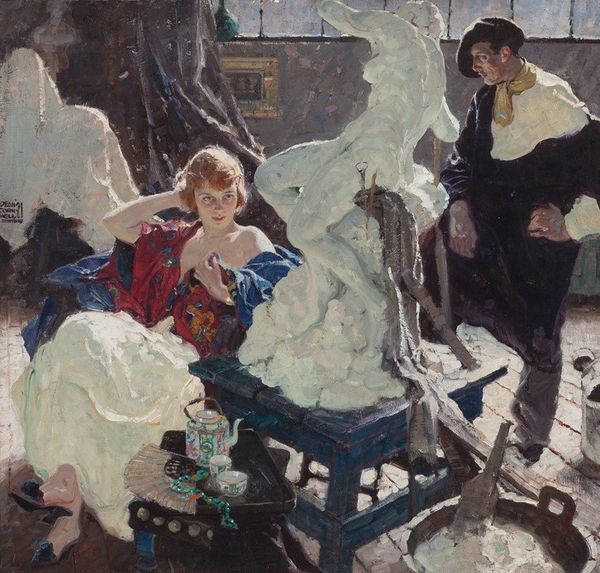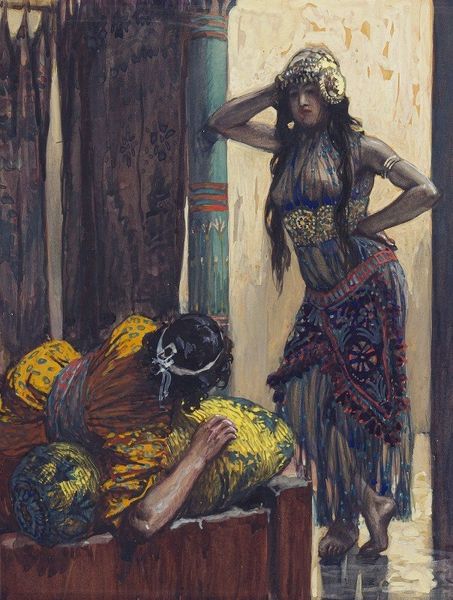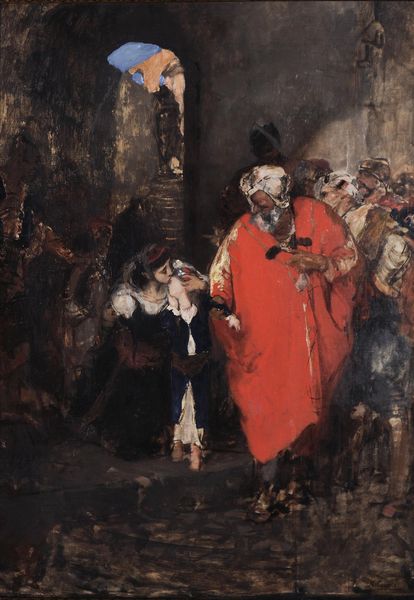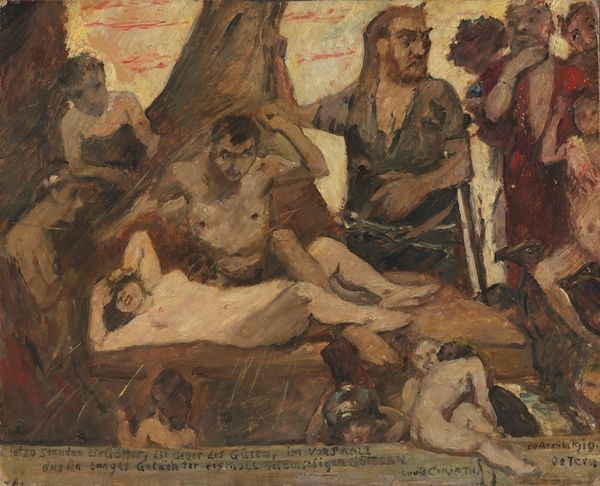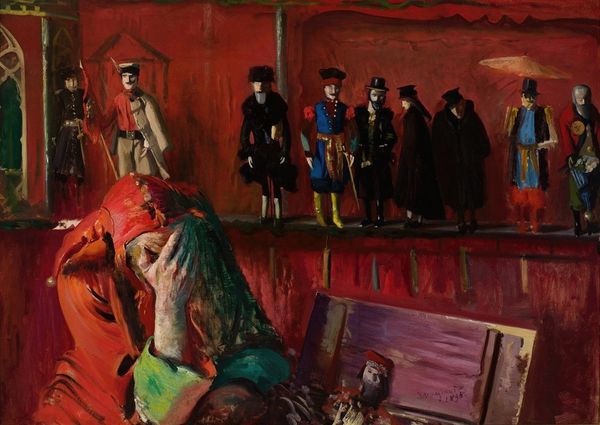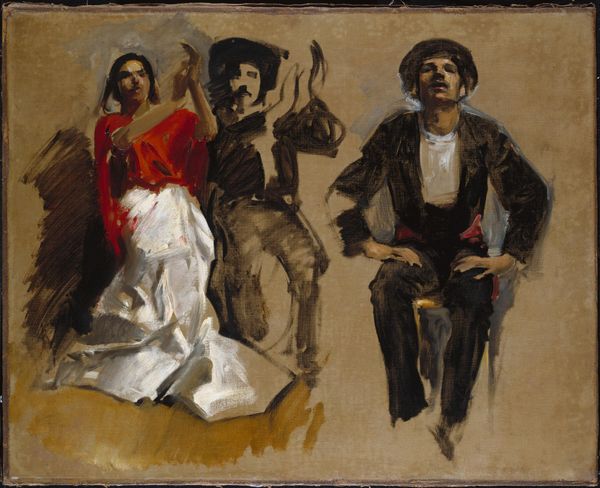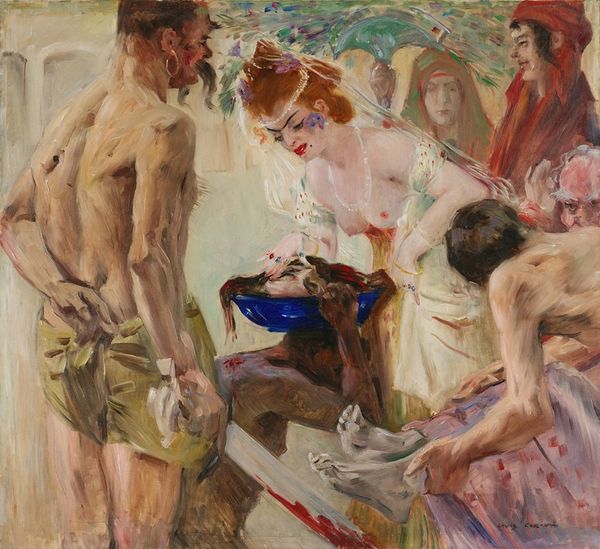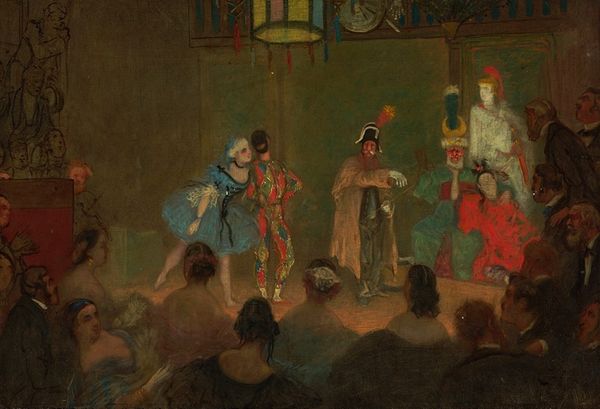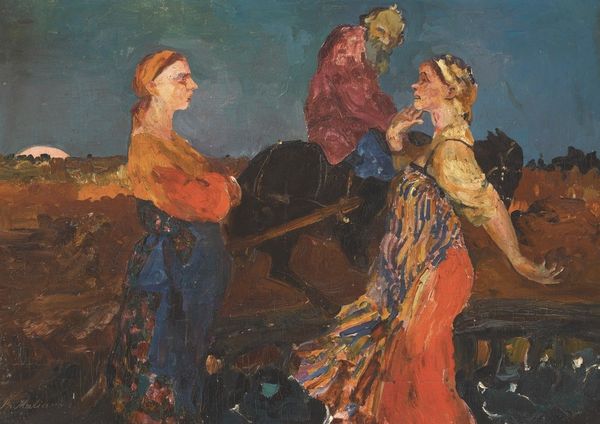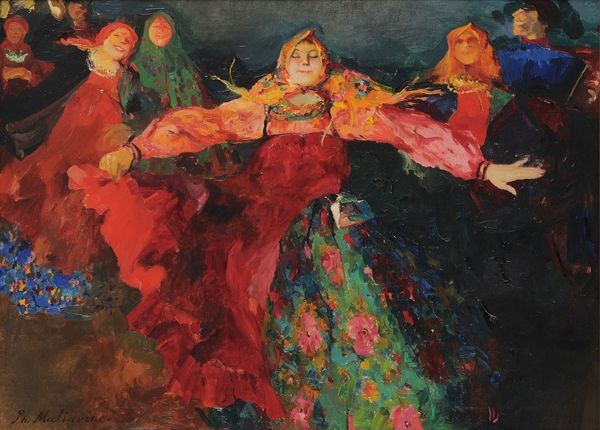
Copyright: Public Domain: Artvee
Editor: This is Dean Cornwell’s "Spanish Tavern," painted in 1922 using oil paints. The atmosphere is really lively and a bit chaotic. It seems to capture a vibrant social gathering. How do you interpret this work? Curator: The tavern scene provides a window into cultural interactions and performance. Consider the politics of representation: who is being depicted, and for what audience? Editor: I hadn’t thought about the intended audience. Curator: Right, the image speaks to romanticized visions of Spanish culture prevalent in the US during the early 20th century, but we need to examine how those visions served particular narratives. Does the painting exoticize its subjects or celebrate diversity, or perhaps a bit of both? Editor: It's interesting to think about that tension between celebrating and exoticizing. Curator: Exactly. Furthermore, what social and economic realities might be absent from this celebratory depiction? Whose stories are not being told here? Editor: I see your point. Thinking about what isn't shown changes my whole view of the painting. So, what would you say is most important to take away from this? Curator: That art doesn't exist in a vacuum. By critically examining this, we gain a richer understanding of not just the artwork, but the cultural dynamics at play when it was created – and even how those dynamics continue to resonate today. Editor: That's given me a lot to consider about art's role in shaping perspectives. Curator: Likewise, your insights encourage me to explore even more interdisciplinary ways of approaching and interpreting historical images such as "Spanish Tavern".
Comments
No comments
Be the first to comment and join the conversation on the ultimate creative platform.
